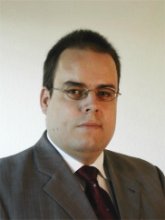Three years ago today, on Oct. 26, 2008, Crista Lopes fired off the email that marked the birth of the hypergrid.

Lopes, an OpenSim core developer, is also a professor of informatics at the University of California, Irvine, and came up with a peer-to-peer system that allowed people to teleport from one grid to another — with their avatars, accessories, and inventories.
Over the years, the hypergrid has evolved, to become more secure, and more stable. It now supports cross-grid instant messaging, friends, and landmarks.
And more improvements are under way.

Here is what the hypergrid means to some of the residents of the emerging metaverse.
Myron Curtis, founder of Virtual Worlds Grid:

While there are significant problems to overcome before the hypergrid achieves its full potential, it is the single most important development since the development of virtual worlds because the hypergrid will allow the development of everything offered on the Internet today in 3D.
With the combination of virtual world technology and hypergrid capabilities, the concept of telecommuting will finally become a viable alternative for both government and business organizations saving billions of dollars annually while expanding their effectiveness.
The hypergrid will make it easier for students to access virtual classrooms from everywhere in the world. People will enjoy the ability to socialize, share, and shop in our 3D environments with their friends and families, and those who have disabilities or physical attributes that prevent them from being accepted for who they are will find virtual worlds with Hypergrid capabilities an ideal foundation upon which to build the social and economic systems they need in order to thrive.
Kai Ludwig, director, TalentRaspel OpenSim hosting company and founder of Wilder Westen and Open Neuland grids:


With the invention of Second Life we got an interactive virtual playground that allows creative people to collaborate, communicate, socialize and live together in a new way never seen before. And in its years of existence this concept has proven to be useful.
With the invention of OpenSimulator we got all the above at our hands. The technology is open sourced, free for everyone and even available in hosted form. And OpenSimulator is not only a Second Life clone but a professional industry strength 3D virtual worlds framework. Or in other words an universal 3D application server better called the “Apache/Tomcat of the 3D Internet”.
Right now OpenSimulator and several other similar projects provide a stable opportunity to create and operate virtual space to live, work and create in. So everyone can freely add his or her small planet to the 3D Internet.
But the big thing is the hypergrid. Grids are like solar systems with planets (regions) orbiting around a sun (gridserver). The hypergrid brings them together and the result is a really awesome: The hypergrid interconnects all the participating grids, forming the virtual universe.
The most important piece of work that is currently missing and slowing the show is the development of state of the art viewer software. Modern rendering engines, browser based access and simple user interfaces are the major missing parts. But as viewer software has to be free of charge to get widely accepted this development is very difficult to start. I’d personally like it, if some foundation could take on that herculean task.
TalentRaspel virtual worlds Ltd. has been working with OpenSimulator technology since mid 2008. We know that the invention of the hypergrid has been one of the major milestones in the history of the 3D Interent, second only to the creation of OpenSimulator itself.
Jo Kay, founder, JokaydiaGrid:


For jokaydiaGRID, the hypergrid means epic connections and new opportunities to explore. Our community has been very proud to host the Hypergrid Adventurer’s Club since its inception, and we’ve thoroughly enjoyed meeting an array of amazing opensim people via those events.
From an educational perspective the hypergrid offers us more flexibility in terms of safe-guarding young people without missing out on opportunities to showcase their work to a broader audience — and, of course, the hypergrid connects us to an amazing community of educators exploring virtual worlds. Happy birthday, hypergrid! I cant wait to see where things are by your fifth birthday!
Ilan Tochner, Co-Founder and CEO, Kitely:


I believe the future of the metaverse lies in multiple virtual-world architectures that communicate using standard protocols. It is too early to tell which architectures will eventually gain the most market share but I believe open-source ones, such as OpenSim, have a good chance of playing a key role in defining which protocols will become the de facto standards down the line.
The hypergrid fits into that category of community-developed protocols that may become one of the metaverse’s building blocks. Kitely’s long-term mission is to enable people to use the virtual world architectures that best fit their needs while maintaining access to their content, user accounts, etc. – the hypergrid protocol may become an enabler for this type of interoperability.
The hypergrid is still lacking certain content control and security components that are hurting its adoption. E-commerce started becoming big business when people stopped fearing buying things online. The hypergrid needs to reach a point where casual virtual world users trust the system to ensure that if they visit other grids or open their doors to people from other grids that nothing bad will happen to them. We aren’t there quite yet.
Kitely’s system requires some infrustructure changes before it can start supporting hypergrid teleports. We still need to address several higher priority items — such as billing, adding alternatives to Facebook logins, and so on — before we’ll be able to spend the R&D resources we need to make this upgrade to our system. That said, adding hypergrid support is quite high on our to-do list.
- OpenSim land area, active users up for the holidays - December 15, 2024
- Discovery Grid moves from OpenSim to O3DE alternative - December 15, 2024
- OpenSimulator Community Conference starts today - December 6, 2024
